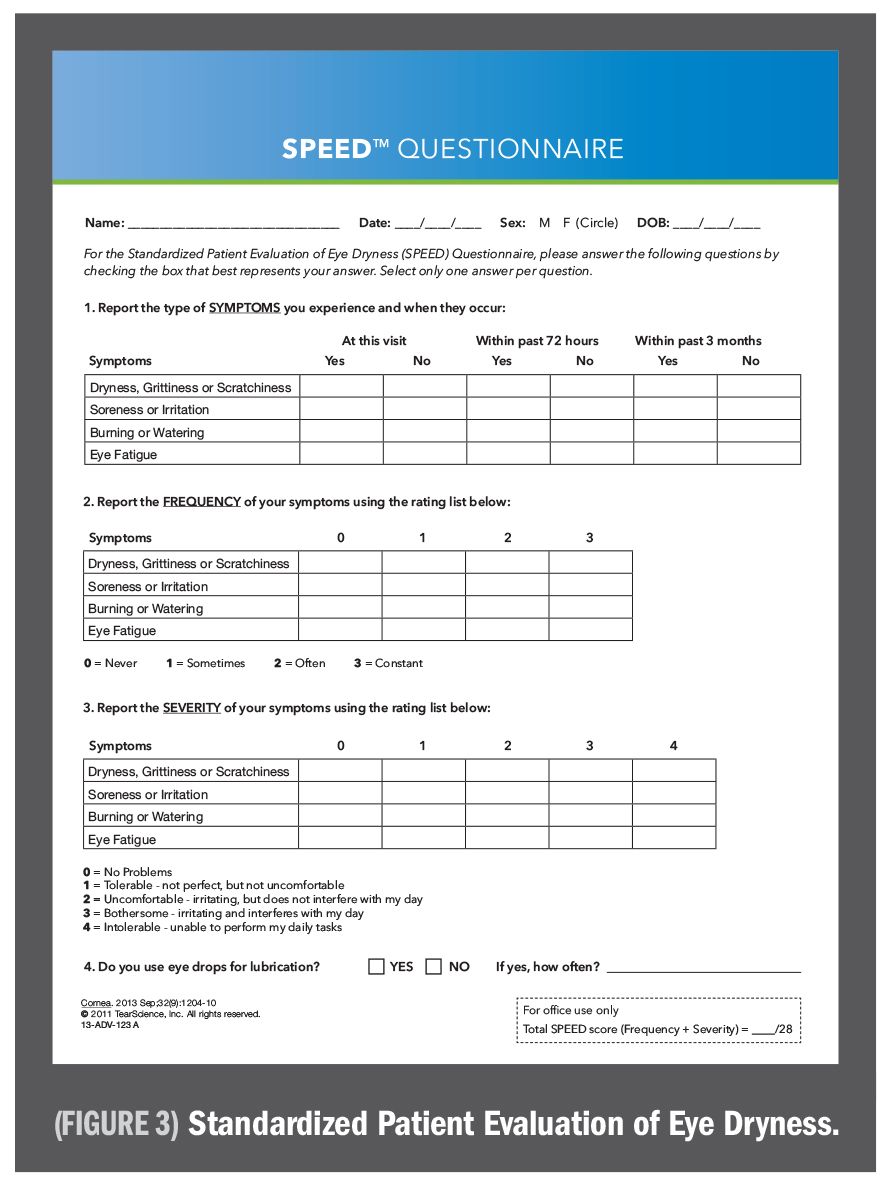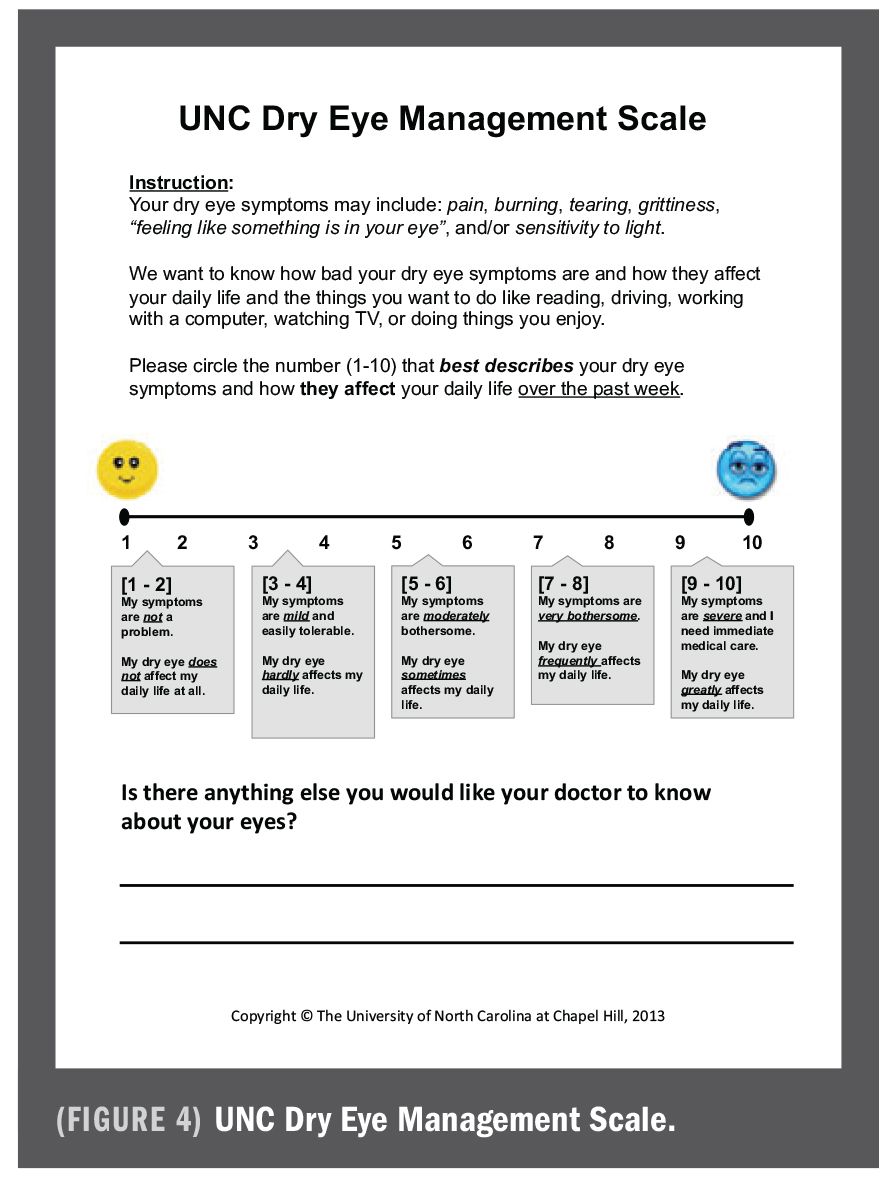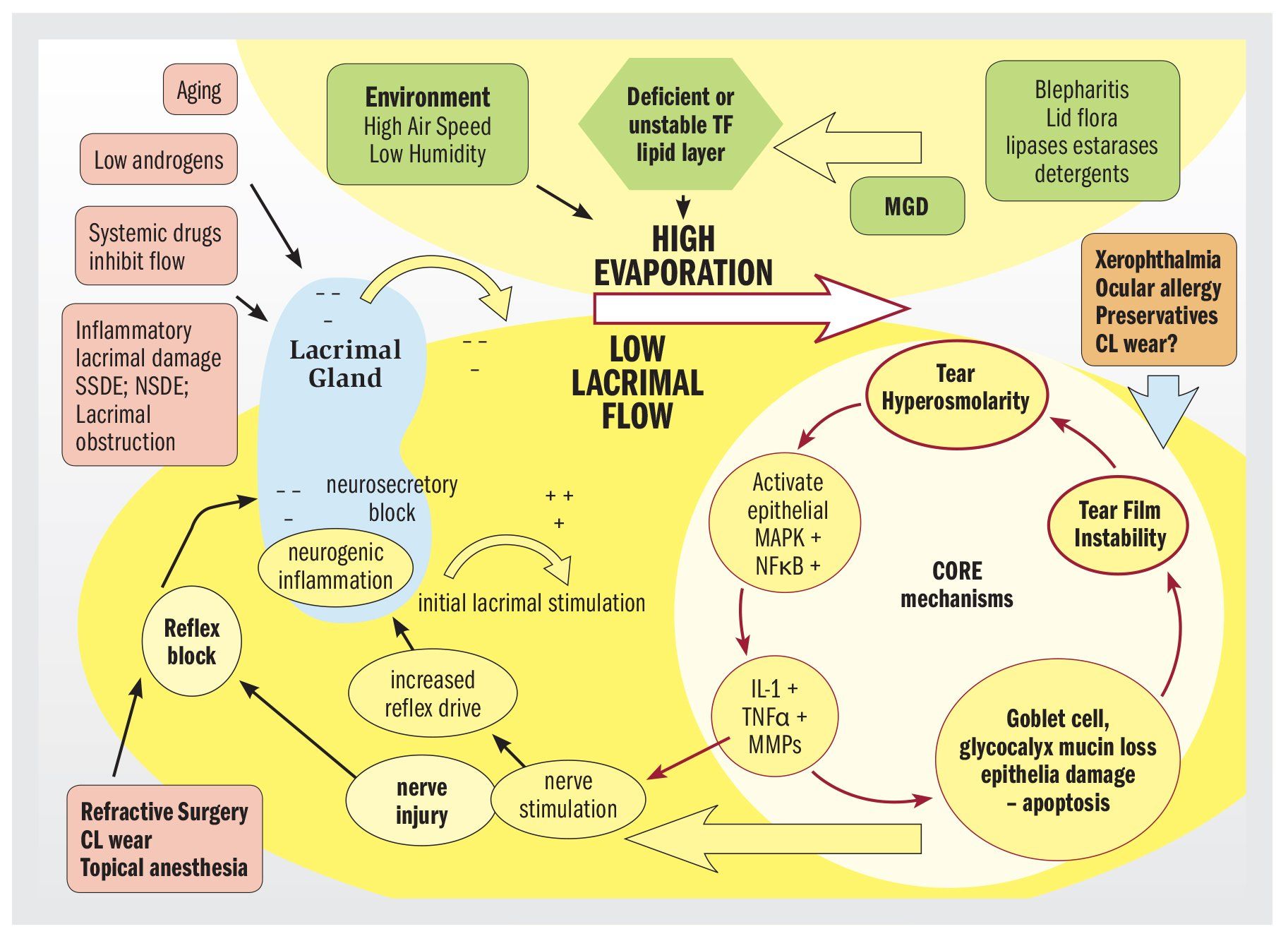Article
Detecting dry eye: What to keep, obtain, or omit
Author(s):
New diagnostic modalities have enhanced clinical abilities, whereas some standbys still get the job done





Dry eye can be straightforward to determine the etiology for diagnosis and treatment-but not always. Newer diagnostic tools have improved clinicians’ ability to treat and follow patients with dry eye, says Christopher J. Rapuano, MD.
Reviewed by Christopher J. Rapuano, MD
Because dry eye disease (DED) is a multifactorial disease involving the hyposecretion of tears and excessive tear evaporation-meibomian gland dysfunction-it can be complicated to identify, said Christopher J. Rapuano, MD. There is a huge overlap between entities, and signs/symptoms of DED often do not match clinically (Figures 1 and 2).
Some concerns that physicians have regarding DED diagnostic tests are they are often not standardized; there may be no well-accepted universal endpoints for the measure; and many tests are technique-dependent, time consuming, and sensitive to the environment and external factors, said Dr. Rapuano, chief of Wills Eye Cornea Service, and professor of ophthalmology, Sidney Kimmel Medical College, Thomas Jefferson University, Philadelphia.
Subjective assessment
Some traditional questionnaires used for DED identification include the OSDI, the NEI-VFQ25, IDEEL, and McMonnies Questionnaire. The OSDI is complicated and takes patients a while to complete, Dr. Rapuano noted. More recent tests are concise. For example, SPEED and the UNC Dry Eye Management Scale are much simpler and easier for patients to take (Figures 3 and 4). A traditional method of evaluating of the tear film was with Schirmer’s I test (without anesthesia), later anesthesia was added with Schirmer’s II.
This test has moderately variable results and can cause superficial damage to the conjunctiva and cornea. Schirmer’s testing also takes 5 minutes-quite a while in the clinic, he added.
Another older test called tear ferning involves the indirect evaluation of mucus in tear film. A small tear sample is collected with a pipette and placed on a glass slide. After 10 minutes, the sample is examined under a light microscope. Normal mucus results in normal ferning. This sort of qualitative analysis is not helpful in the office, but it might have a place in research settings, Dr. Rapuano noted.
Tear film testing
Tear breakup time, traditional test, evaluates tear stability. It is done prior to any other drops being in stilled or test performed, by placing fluorescein dye with saline in the eye. The patient blinks, and the seconds before a smooth surface is seen are counted. This is a relatively objective, easy, fast, and reproducible diagnostic. It also correlates well with ocular surface disease signs and symptoms, and remains useful in practice, Dr. Rapuano noted. Corneal fluorescein testing is also non-toxic and fast as well as relatively objective.
It reveals significant corneal epithelial damage. This is also an old test that is also still worth doing, he added. Rose bengal staining, on the other hand, is an older test that is no longer needed, he said. Though a fast and objective way of showing conjunctival damage, it is toxic, painful to the patient, and difficult to obtain, Dr. Rapuano noted. Lissamine green has replaced rose bengal staining; it is also fast, objective, and indicates areas of significant conjunctival epithelial damage. Lissamine is non-toxic, well tolerated, and easy to get, he said.
Osmolarity newer kid on the block
Tear osmolarity in essence looks for excess salt in tears. Higher numbers indicate a more abnormal reading. TearLab is the most widely used test in this arena. It must be performed before other drops and exams are administered, and both eyes must be tested. The osmolarity is abnormal when >308 mOsm/L or intereye difference is greater than 8 indicating instability.
The MMP9 test (Quidel) identifies higher levels of this marker of inflammation, indicative of worse DED. TearLab’s Discovery test in development will test both osmolarity and MMP-9, and the company will be adding inflammatory and perhaps allergy markers in the future. The LipiView I (Johnson & Johnson Vision) is an older device that measures the thickness of the lipid layer of the tear film. The device also provides an analysis of partial blinking, which is useful to show and discuss with patients.
Imaging
LipiView II (TearScience/Johnson & Johnson Vision) provides objective imaging of the meibomian glands, thus giving a window into their health (Figure 5). Oculus Keratograph 5M performs multiple analyses of the tear film as well as tear meniscus, eye redness, meibomian gland imaging, and noncontact tear breakup time. The device generates a report and scale creating what is called a JENVIS dry eye report (Figure 6), which is meant to provide information on how the factors interact and disease severity.
High-resolution anterior-segment optical coherence tomography (Optovue, Cirrus) can objectively evaluate tear film meniscus/tear volume
Systemic disease
Traditional testing for Sjögren’s syndrome includes blood tests (ESR, RF, CBC, anti-SSA and -SSB and ANA) that can be nonspecific. Bausch + Lomb’s Sjo test combines these biomarkers plus novel, proprietary ones, and can reportedly detect disease at an earlier stage.
Dr. Rapuano notes he finds this test most helpful as backup when referring a patient to a rheumatologist. Dry eye can be straightforward to determine the etiology in order to diagnose and treat- but not always. Newer diagnostic tools have improved clinicians’ ability to treat and follow patients with DED.
Newsletter
Don’t miss out—get Ophthalmology Times updates on the latest clinical advancements and expert interviews, straight to your inbox.




